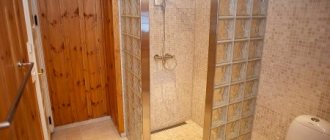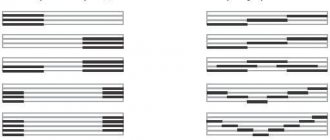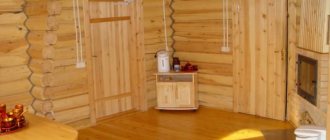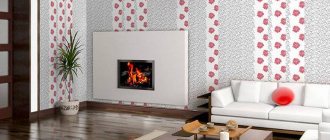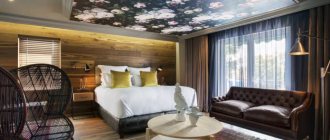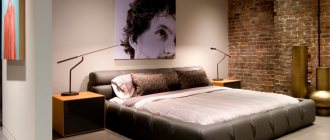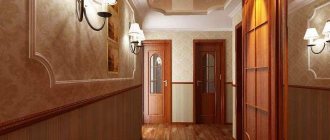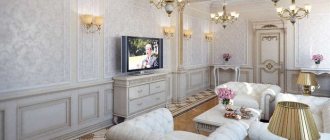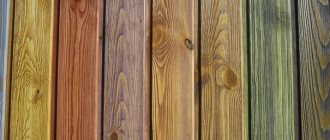The role of volumetric panels in design: nuances of selection and design
First of all, 3D panels are a fashionable trend in interior design that is not yet very widespread. This type of decoration brings additional volume to the room, creates interesting visual effects due to the play of light on the relief surface, and always becomes the central object against the background of the overall design.
Modern 3D panels for walls in the interior can be assistants in solving issues of zoning, finishing and decorating any horizontal or vertical surfaces, interior partitions.
What is the popularity of 3D gypsum panels for the kitchen?
Cheers to the owners!
100% purified natural material, a material capable of maintaining the indoor microclimate. Also versatile in the ability to heat and sound insulate sheathed surfaces.
Repairers rejoice!
Buying panels for your kitchen from us will mean ease and simplicity of installation.
Why? Installation of these gypsum panels does not require careful preparation of walls for finishing. Moreover, replacing the damaged area does not require dismantling the entire structure. Budget savings!
Yes, long service life is another component of popularity.
Designer tips for using 3D panels
- Finishes with large volumetric textures are better suited for spacious rooms, while small patterns can be used even for small rooms.
- The relief wall itself, even white, is quite a noticeable decor. It is not always worth emphasizing it even more by painting it too brightly, with exciting colors.
- If brightly colored panels are used, other walls should be as light as possible.
- Visually, the 3D effect will be noticeable in any lighting. In addition, it changes depending on the viewing angle. To make it more obvious and interesting, the pattern is often illuminated with wall, floor, strip or ceiling lights.
- If the design involves the use of relief locally, as a separate art object, volumetric panels are perfect. Many manufacturers offer ready-made options, but you can also combine tiles from any collection to suit your taste.
- It is important to choose the right material in color and shape. Elements may have an ultra-modern design, then they will be an excellent complement to high-tech, modern, and techno styles. Classic motifs are more suitable for historical styles. And almost invisible, light and unobtrusive ones can be used even for ethnic ones.
- Wall panels are not only decoration, but also decor, so they should not be covered with bulky pieces of furniture, and they are almost never complemented by individual accessories.
- Quite deep textures are suitable for decorating living rooms, offices or studies, and delicate, soft and laconic ones look better on the walls of bedrooms or bathrooms.
- In addition to the variety of colors, surfaces can be matte or glossy, which is also important to consider when choosing a material. Glossy coating gives more optical effects and visually expands the space. Matte simply stands out with its texture, creating the necessary mood, complementing the atmosphere with comfort and tranquility.
3D panels in the living room interior
In the living room, you can cover the entire wall, highlight the TV area or fireplace. Any relief will be suitable here, from simple curves to original shapes. Thanks to the 3D effect, a truly fabulous environment is created. If there are columns here, then you need to decorate them. If you want to focus on several zones at the same time, you need to be careful, because too much decor can spoil the impression. View living room panels
Types of decorative wall panels
In fact, it is not enough to cover a wall with any panels you like. Only those types of finishes that are correctly selected in size, texture and material can achieve the desired result, complement, and decorate the interior. Before going to such design delights, it is worth familiarizing yourself with the features of existing options, their advantages, as well as disadvantages.
Gypsum panels
Gypsum panels are one of the most common; they are safe, non-toxic, resistant to temperature changes, provide additional sound insulation, and have a long service life. The possibility of painting allows you to literally update the room in a few hours, bringing new notes. During installation, a seamless surface can be achieved. In case of damage, sandpaper with putty will help to carry out a quick restoration.
Plastic
In the manufacture of PVC wall panels, technologies are used that make it possible to create imitation of many natural materials, including finishing stone and wood. Polymers also successfully imitate the texture of fabric or leather, and some collections include panels actually covered with high-quality leather or textiles. Plastic panels have no equal in the variety of colors and textures. The depth of the relief depends on the thickness of the material and ranges from 30-120 mm. Plastic tiles are lightweight, waterproof, and easy to maintain.
Glass
This type of finishing was one of the last to appear and had not yet become very popular. Glass 3D panels for walls look very beautiful and have excellent quality characteristics, but not everyone can afford their price. In addition, due to their heavy weight, they are not suitable for all walls, especially partitions.
Aluminum
Recently, they have been used with pleasure by both professional designers and ordinary homeowners who have decided to update the interior on their own. The finish is not afraid of exposure to temperature or moisture, and is resistant to ultraviolet radiation and various alkaline environments. No further processing or coloring is intended. Manufacturing technology allows you to experiment with texture and color. Due to their light weight, they can be mounted even on plasterboard partitions, but the panels are attached to a frame made of metal profiles, so they will take up some area from the room.
Embossed MDF panels
Like previous options, MDF panels can have different textures, textures, and colors. They are made of high quality composition, which ensures stability and long service life. However, they are not recommended for use in rooms with high humidity, for bathrooms, saunas, baths. Painted surfaces are the most popular among designers. A special feature of MDF panels is the ability to use them not only as decoration for walls, but also for decorating partitions, furniture facades, and doors.
3D panels in the bedroom interior
In the bedroom, the head of the bed is usually decorated - completely or partially. Light pastel shades will add an aura of romance and tranquility. Imitation of water surface or waves, floral ornament will be very useful. View bedroom panels
Application options for 3D panels
Based on many years of experience of designers and decorators, we can highlight the most successful options for using 3D panels in the interior of rooms for various purposes.
Panels in living rooms
It is the design of living rooms that is most often decorated with this type of decoration. Wall panels will be an original addition in the TV area. Models that imitate waves, water surface or modern geometric shapes look especially interesting.
The volume on the walls will highlight the fireplace area. At the same time, it is important to choose the right material so that the style of the hearth matches the style, texture, and finishing pattern. For rooms designed in a classic style, panels that imitate capiton fabric or carriage screed are often chosen.
At the same time, the light version looks discreet, but very advantageous, and with the dark one it is possible to give the room a certain mystical mood. Columns with a straight section, square, rectangular, panels will give a special chic, especially if they are supplemented with lighting.
Use in the kitchen
The second most popular option is to use 3D panels for walls in the interior of a kitchen or dining room. Here, as a rule, preference is given to plastic or MDF panels, since they are easy to care for and resistant to moisture. If we are talking about the use of gypsum materials, then they are additionally coated with water-repellent varnishes.
Most often, the material is used to line the working wall. You can also successfully highlight a dining area in the kitchen. In spacious rooms, this type of finishing can be used in two places at the same time, creating a more holistic design.
Bedroom decor
There are usually not many places in the bedroom where a voluminous texture will look advantageous. In most cases, this is the wall at the head of the bed. It is important that the selected texture and color of the material successfully complement the overall design.
If the decor has a small pattern, sometimes the entire sleeping area is highlighted: the decoration along the width of the bed is raised to the entire wall and placed three-quarters on the ceiling. In small rooms, a small decorative panel on the wall will look better. Less often, the wall opposite the bed is made voluminous, as a rule, if a TV is placed there.
For children's room
Some manufacturers offer a special range for children's rooms. Such panels often take the form of Lego cubes, various geometric shapes, and colors.
An interesting addition for a nursery would be a part of the wall with a wave-like texture, which is painted in rainbow colors. In children's rooms, this decor is recommended to be used only in the play area.
Bathroom cladding with 3D panels
In bathrooms, volumetric panels are used locally or to highlight a separate area in combined bathrooms. You can select any zone if you choose a material that is not affected by moisture and temperature.
Most often, the wall above the bathroom or a completely free wall is made voluminous. An unusual finish will help highlight the toilet area and will not put a strong emphasis on it if it is in lighter shades.
3D panels are such a diverse and versatile material that they can be used anywhere. In addition to the rooms described above, you can decorate the loggia, do wall decoration near the stairs, in the hall or hallway.
3D panels in the kitchen interior
So, this is an excellent solution for zoning in the kitchen, because this is not a room where local design would be appropriate. It is better to highlight a separate area. A geometric or wave-like pattern looks good here. Bright, rich colors will help accentuate a certain place.
3D panels on the ceiling and for decorating columns
The aesthetics and originality of 3D slabs are highly appreciated by designers, which is why they also use them as ceiling coverings. Upstairs they look completely different than on the wall. Modern craftsmen decorate the transition to the ceiling with plaster panels. Take a closer look, you will definitely like it!
Gypsum panels on the ceiling
Decoration of columns with 3D panels
